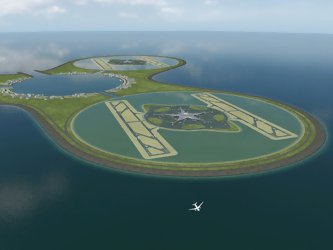 The way the Dutch viewed their national airport Schiphol has changed over the years. From the starting point of an adventure, it became the nuisance in the backyard. The Bijlmer disaster of 1992, when victims living (and dying) in Amsterdam’s biggest ghetto were pushed into a secondary role to El Al’s secret cargo, really helped define this latter view.
The way the Dutch viewed their national airport Schiphol has changed over the years. From the starting point of an adventure, it became the nuisance in the backyard. The Bijlmer disaster of 1992, when victims living (and dying) in Amsterdam’s biggest ghetto were pushed into a secondary role to El Al’s secret cargo, really helped define this latter view.
However, Schiphol’s own ambitions are radically different. Instead of becoming a smaller, gentler airport, it wants to become the major air traffic hub of this part of Europe. People therefore started to look at alternative locations for the airport, not as close to the most densely populated area of this densely populated country. An idea that keeps floating to the top is that of an airport in either the IJsselmeer or the North Sea, even though the Ministry of Transport and Water Management concluded in 2003 that a second national airport was superfluous, for now. Such a water-bound airport could be an artificial island, or a mega-floater.
In 2007 Haskoning and Van Oord, who helped build artificial islands before, proposed rotating, floating landing strips (see illustration). And last week, Jan van Kessel got his PhD for a study into the stability of mega-floaters made of hollow, upside down, concrete ‘shoe boxes’, apparently, 50% more stable than traditional barges.
And even though the government has declared the debate redundant, the Dutch keep dreaming of their airport at sea.
